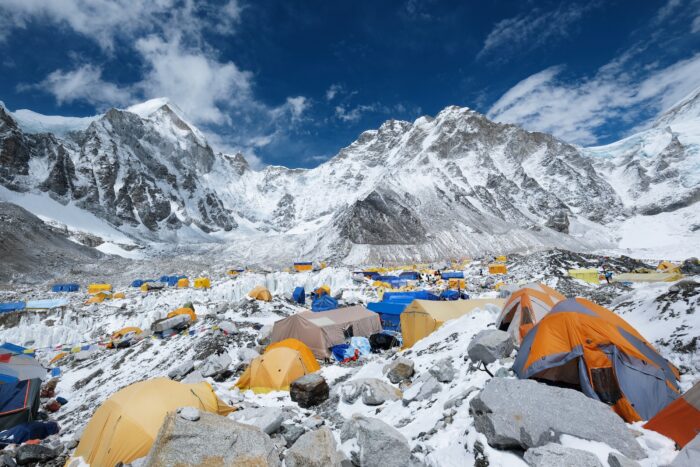What does representation in climbing look like? It looks like climbers of all abilities getting inclusion, access, and working together to progress in the sport. Rock climbing guide Sonya Wilson is facilitating that in a big way.
Over Memorial Day weekend, Eddie Bauer released its film ‘Elevated,‘ featuring climber Sonya Wilson. Wilson is a climber, teacher, climbing guide, and the founder of the ASL Climbing Network based in Los Angeles. Wilson is Deaf and uses ASL (American Sign Language) to communicate. She’s been climbing on and off for more than 30 years.
Yesterday, Eddie Bauer named Wilson to its Guide Team, making Wilson the first Deaf climber and guide to be backed by the brand. She’s possibly one of the first Deaf climbers to be recognized by any brand, marking a huge step for Deaf representation in the sport. Wilson joins three others on the Eddie Bauer Climbing Guide Team.
According to the World Federation for the Deaf, there are more than 70 million people worldwide who identify as Deaf (versus hard-of-hearing (HoH), or late-deafened, which is someone who becomes deaf later in their adult life). It’s worth noting that there are many Deaf climbers and other Deaf athletes in the world, but hardly any are recognized by a brand in this way.
Undeniably, Sonya Wilson is paving the way for more Deaf and HoH climbers specifically to gain access, representation, and recognition in the sport. I chatted with Sonya Wilson and Eddie Bauer to learn more about the recent film, her climbing journey, and what Deaf representation in climbing looks like.
Q&A With Climber Sonya Wilson

GearJunkie: How many years have you been climbing?
Sonya Wilson (SW): [I’ve been] climbing trees and scrambling rocks since 5 years old. Then climbing with a rope and harness since I was 19. In my 20s and 30s, I would go to climbing gyms (when they started in the ’90s), and climb outside at Stoney Point [in L.A.]. I’ve been teaching climbing since about 2013, after I established the ASL Climbing Network.
Rock climbing is a very hands-on team sport. Would you say people are more inclined to learn how to work together with Deaf climbers? What has been your experience?
Now yes, but it was definitely a challenge at times. In the past, people were less willing to communicate with Deaf people and climb with me. But that was before formal climbing gyms were set up.
Having gyms helped benefit a lot of people. That kind of environment encourages people to pair up, meet new people, socialize more, and connect with climbers in your local area. It helped build bridges, build community.
I think gyms are the reason we’ve had so many positive things happen in the rock climbing world. When I set up the ASL climbing days a few years ago, I wanted to provide a space to welcome everyone in my community — Deaf and hearing. Sometimes I’ll gesture, “Hey, do you want to come climb with us?”
And I’ve seen three types of responses from people: They’ll either say no, or be caught off guard. As a teacher, I can draw those people in, get them to join. Usually after that [first interaction], it’s no big deal; people will feel more comfortable. The third type of people I come across will be people who are naturally great at gesturing, people who are excited to get involved, and will say “yes!” That’s cool.

Have you observed any barriers, if any, between gym climbing and climbing outside, in terms of access?

You and other Deaf climbers don’t just need someone who is Deaf. You need a climbing partner at your skill level — someone who can climb 5.12, for example. How do you find those people?
How can everyone help make the sport more inclusive?

What more can outdoor brands and companies do in terms of inclusion and access?

Can you talk about a recent positive experience you had in the climbing/outdoor industry?
Up next, watch Eddie Bauer’s ‘Elevated’ Film. Our Q&A with Sonya Wilson continues below.
Can you talk about your experience on location for the film “Elevated”? Where did you climb, and who with?
Where are some of your favorite places to climb?














